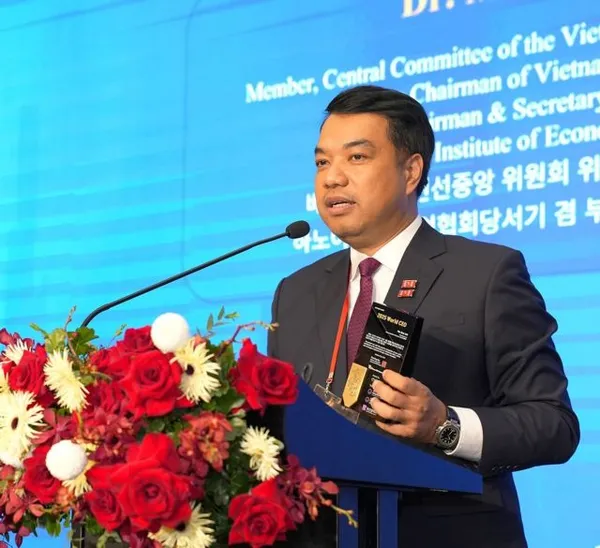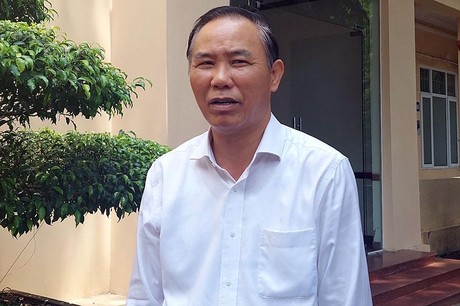 Talking Shop
Talking Shop

 |
| Phùng Đức Tiến, deputy minister of Agriculture and Rural Development |
Amid increasing pork prices, the Ministry of Agriculture and Rural Development has been implementing solutions to remove difficulties and promote production. Therefore, the livestock industry is expected to ensure supply from now until the end of this year.
Phùng Đức Tiến, deputy minister of Agriculture and Rural Development, spoke to local media about the solutions to meet food demand and curb CPI in the last months of 2022.
Is the food supply sufficient from now until the Lunar New Year?
In 2021, Việt Nam's meat production reached 669 million tonnes. By the end of July 2022, the livestock industry saw an increase of 4.8 per cent in pig heads, 1.6 per cent in heads of poultry; and 2.6 per cent of cow heads. Meanwhile, the buffalo herd in 2021 decreased by 2.5 per cent but so far, it has only reduced by 1.1 per cent.
Thus, the industry is expected to produce over seven million tonnes of meat, 18.4 billion eggs and over 1.3 million tonnes of milk. That means there is enough food from now until the end of the year, especially for the Lunar New Year holiday.
In recent days, the price of live hog has decreased to VNĐ68,000-70,000 (US$) per kilo while the production cost of pigs is VNĐ60,000 per kilo. With this price, both farmers and consumers benefit and it also has no effect on the consumer price index (CPI).
The Government has had solutions to maintain stability in pork prices as the price of input material for feed production has increased by 30-45 per cent.
The ministry has also promoted inspections of pork trading in border provinces to ensure a stable domestic supply and disease prevention.
How is the ministry directing re-herding, especially at large enterprises?
Now, 16 large livestock enterprises that dominate the pig industry are growing well with total pig heads of 28 million. Việt Nam has also successfully researched a vaccine for African swine fever. This is an important tool to prevent disease. In addition, the foot-and-mouth and blue-ear diseases are relatively well controlled.
In 2021, Việt Nam slaughtered about 51 million pigs. This year, the sector strives to reach more than the figure. Besides, it expects to maintain the growth of beef, buffalo meat, poultry and seafood to serve the market at the year-end and until the Lunar New Year.
In two years, 2019 and 2020, Việt Nam produced 3.8 million tonnes of pork each year, and now this output is unchanged.
The output of live pork of enterprises accounts for less than 50 per cent and the rest comes from farmers. Thus, higher live hog prices at present brings benefits to both the farmers and the enterprises.
Since the beginning of the year, the price of animal feed has increased many times due to dependence on imported raw materials, pushing pork prices up. What has the ministry been doing to solve difficulties for the farmers?
The production capacity of material for animal feed production in Việt Nam is still limited. For example, Việt Nam's maize yield is only 4.8 tonnes per hectare, while countries using genetically modified seeds gain an output of up to 9 tonnes per hectare. It shows that the productivity of animal feed materials in Việt Nam is very low.
Importing feed materials at lower prices is a necessity. However, the Government has directed the development of autonomous livestock production. Accordingly, the agriculture sector would convert some inefficient arable land to growing crops for materials of animal feed production.
Recently, the ministry has requested the Department of Crop Production and the Department of Livestock Production to coordinate with De Heus Group to build a number of cooperatives for growing cassava and maize in the Central Highlands provinces. That will ensure direct purchasing of materials for the production of animal feed from enterprises, meeting domestic consumption demand. This is one of the measures to reduce dependence on imported raw materials.
In addition, Việt Nam will focus on growing biomass corn and speed up the processing of 1.5 million tonnes of agricultural by-products as feed for cattle. This is the fastest solution to reduce dependence on imports. — VNS